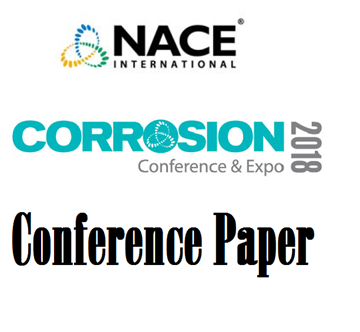Search
Products tagged with 'pipelines'
View as
Sort by
Display
per page
(Tanks) Advantages of Using 100% Solids Epoxy as Potable Water Linings
Product Number:
72-COAT_DEC21
Publication Date:
2021
$20.00
03197 A POTENTIAL ATTENUATION EQUATION FOR DESIGN AND ANALYSIS OF PIPELINE CATHODIC PROTECTION SYSTEMS WITH DISPLACED ANODES
Product Number:
51300-03197-SG
ISBN:
03197 2003 CP
Publication Date:
2003
$20.00
06163 CATHODIC PROTECTION OF PIPELINES IN HIGH RESISTIVITY SOILS AND THE EFFECT OF SEASONAL CHANGES
Product Number:
51300-06163-SG
ISBN:
06163 2006 CP
Publication Date:
2006
$20.00
51316-7024-High Temperature FBE Coating Disbondment in Multi-Layer PP Insulation Coatings
Product Number:
51316-7024-SG
ISBN:
7024 2016 CP
Publication Date:
2016
$20.00
51316-7194-Monitoring and Risk Assessment of Microbiological Influenced Corrosion in Offshore Pipelines
Product Number:
51316-7194-SG
ISBN:
7194 2016 CP
Publication Date:
2016
$20.00
51318-10466-Internal Corrosion Asset Preservation Methodolgy - Case Study
Product Number:
51318-10466-SG
Publication Date:
2018
$20.00
51318-10530-The Nuclear Energy Agency Contribution to Nuclear Materials Performance Knowledge Preservation
Product Number:
51318-10530-SG
Publication Date:
2018
$20.00
51318-10548-Localized Corrosion of Mild Steel in Marginally Sour Environments
Product Number:
51318-10548-SG
Publication Date:
2018
$20.00
51318-10942-Acquisition Visualization and Interpretation of Pipeline Corrosion Monitoring Data
Product Number:
51318-10942-SG
Publication Date:
2018
$20.00
51318-10963-Fatigue and Static Crack Growth Rate response of C110 under CP using a single specimen methodology
Product Number:
51318-10963-SG
Publication Date:
2018
$20.00
51318-11103-A combination of qPCR RT-qPCR and NGS provides a new tool for assessment of MIC risk in pipelines
Product Number:
51318-11103-SG
Publication Date:
2018
$20.00
51318-11223-Evaluation of Top-of-Line Corrosion Model for Multiphase Oil and Gas Environments
Product Number:
51318-11223-SG
Publication Date:
2018
$20.00












